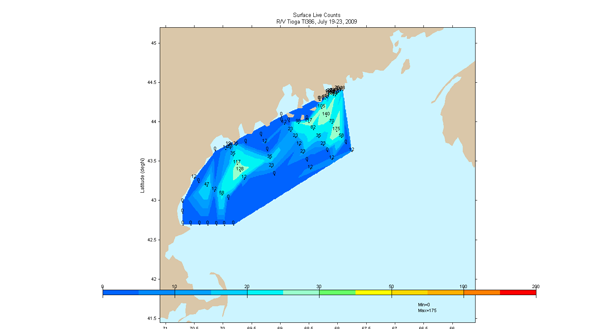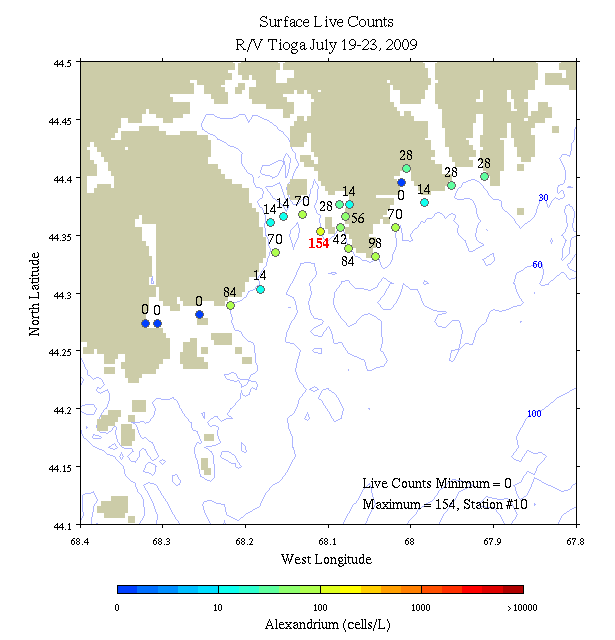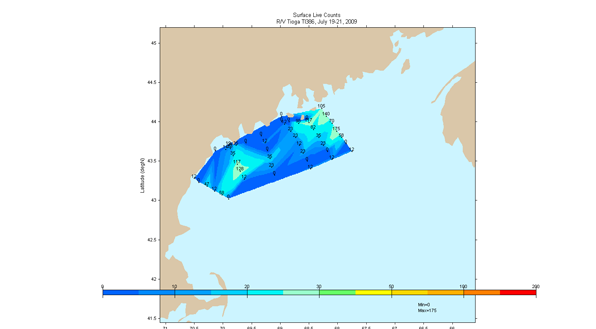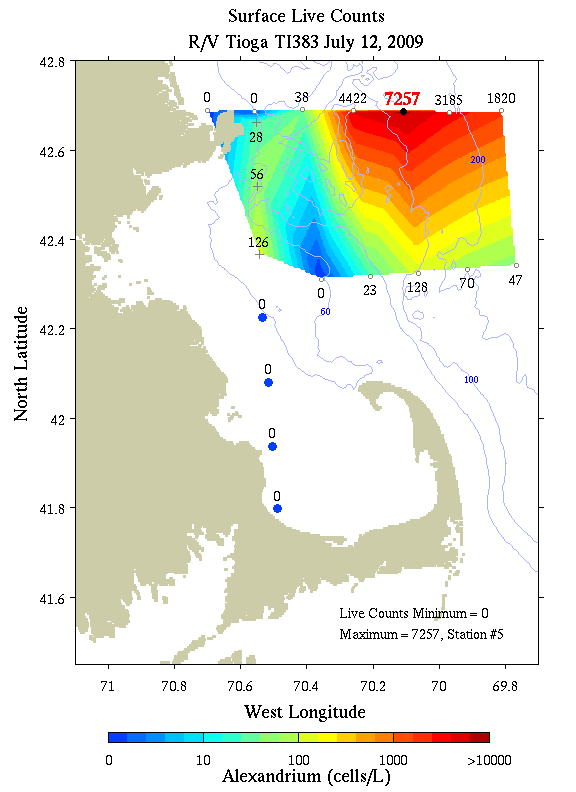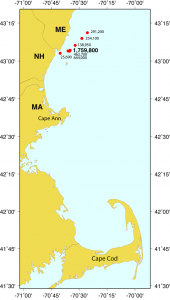2009 Bloom Season
The following is the final summary of what happened in 2009. Also provided are "status reports" prepared at different dates during the year for those who are interested in the progression of observations and commentary.
In early 2008, we issued a seasonal forecast for a major regional Alexandrium bloom in the Gulf of Maine (see news release). This was based on a relationship we believe exists between the number of Alexandrium resting cysts in bottom sediments and the size of the subsequent bloom. That forecast was quite accurate, as the 2008 red tide was significant in size, causing shellfish closures throughout Maine, New Hampshire, and much of Massachusetts (see map). In 2009, we issued another forecast (see news release), this time for a "moderate" bloom, since the cyst abundance was relatively low compared to past years. This forecast was generally borne out, as the geographic extent of the harvesting closures caused by the 2009 bloom (see map) was similar to that in 2006, a moderate toxicity year. There were, however, some unique aspects to the 2009 bloom that are highlighted below.
Gulf of Maine
The initial stages of the 2009 bloom followed what we consider to be a "typical pattern" for the Gulf of Maine, with toxicity appearing first within and near Casco Bay, then increasing in western Maine, New Hampshire and Massachusetts and subsequently decreasing in those areas in early June. In most years, this pattern is followed by an increase in toxicity in eastern Maine as waters warm there, with western waters remaining relatively toxin free. Consistent with this pattern, in mid to late June 2009, Alexandrium cell abundance increased dramatically in the Bay of Fundy, and shortly thereafter, in eastern Maine. At that point, the situation deviated from the norm, as toxicity then spread rapidly along the entire Maine coast, causing high and extensive toxicity in Maine through much of the summer. We believe this late season surge in toxicity pattern directly reflects wind patterns – specifically a sustained interval (late June through July) of easterly and northeasterly ("downwelling favorable") winds that would have carried cells to shore and to the west.
A "red water" bloom of Alexandrium catenella (i.e., a true red tide) was observed in early July near Portsmouth, NH, extending to the south toward Massachusetts Bay. This may explain the dramatic change in the distribution of A. catenella cysts mapped out later that year. That distribution showed large numbers of cysts in the region from Casco Bay to Stellwagen Bank, an area that had previously been devoid of Alexandrium cysts based on mapping surveys in 2004 - 2008.

